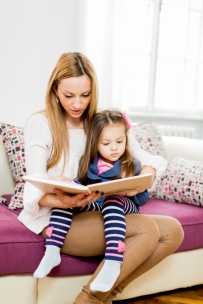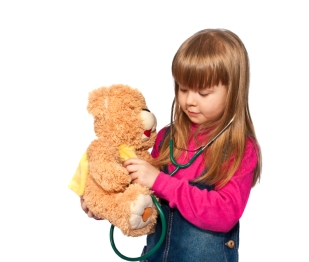 Literacy development for preschool children is an important part of providing appropriate early learning experiences. Research has shown repeatedly that literacy is a foundation for all learning and that careful consideration must be given to the types of activities and experiences offered to children in support of this. There are numerous ways to encourage and enhance literacy, particularly through language development, reading, and writing.
Literacy development for preschool children is an important part of providing appropriate early learning experiences. Research has shown repeatedly that literacy is a foundation for all learning and that careful consideration must be given to the types of activities and experiences offered to children in support of this. There are numerous ways to encourage and enhance literacy, particularly through language development, reading, and writing.
Oral language is the basis for successful reading and writing. The more language exposure a child has, the better a child’s chances for having positive experiences down the road.
Another important aspect of language development is the development of phonemic awareness. This is not phonics! Phonics refers to using letter/sound relationships to decode words. Phonemic awareness is more basic and focuses on hearing the sounds of language. A child with phonemic awareness understands that words are made up of individual sounds, and is able to manipulate the sounds in words. The child may playfully change beginning or ending sounds or manipulate the sounds in other ways.
There are numerous ways to encourage both oral language development and phonemic awareness:
- Talk directly to infants and toddlers. Tell them what you are doing. Engage preschoolers in everyday conversation.
- Tell infants/toddlers what you are feeding them. Talk with older children during meals and snacks.
- Use simple sign language for babies and toddlers.
- Sing songs and use actions as much as possible. Move to music!
- Recite rhymes and chants. Use finger plays. Include alliteration (Annie ate an apple.)
- Play with words (pancake, shmamcake, cakepan, canpake)

- Take preschoolers on “field trips” around the yard, house, and neighborhood. Ask them what they see, hear, and smell. Include infants and toddlers on these trips as well.
- Read to children every day.
- Tell stories to older children.
- Limit TV exposure to educational programming. If you do include this, sit with the children and ask predictive questions, engage with them, sing along, etc.
The use of play centers and dress-up are excellent ways to increase language development. Adults who participate in play can encourage children to expand their thoughts, vocabulary, and social interactions. Play episodes become longer and take place at a higher level. There are many ways that adults can participate:
- Pose problems for children to solve. For example, ask, “Ethan, what might your baby want to eat?”
- Make suggestions about the play such as, “Do you think you could use this as a cape?”
- Provide more information about the situation such as, “Sam, mail carriers use a bag to carry letters.”
Because of space considerations, it may be helpful to organize materials for play centers into categories and store the items in boxes so they can easily be tucked away. Collect materials appealing to both genders. Items you might want to include are dresses, ties, jackets, fun shoes, pants, pieces of fabric,  stuffed animals, donated materials from businesses, child-safe tools/equipment, bags/purses, etc. Check yard sales for inexpensive items. Rotate and bring sets of materials out according to children’s interests. Ideas for boxed play centers include post office, pet store, hospital, library, hair salon, grocery store, or house. Play in centers with children until they are comfortable playing on their own. Ask yourself if children know the situation well enough to play or why they might stop playing. Introduce new play centers if and when they are “played out.”
stuffed animals, donated materials from businesses, child-safe tools/equipment, bags/purses, etc. Check yard sales for inexpensive items. Rotate and bring sets of materials out according to children’s interests. Ideas for boxed play centers include post office, pet store, hospital, library, hair salon, grocery store, or house. Play in centers with children until they are comfortable playing on their own. Ask yourself if children know the situation well enough to play or why they might stop playing. Introduce new play centers if and when they are “played out.”
To read more about the fundamental aspects of early literacy, see our tips on Reading Development and Writing Development.
Back to blog listing